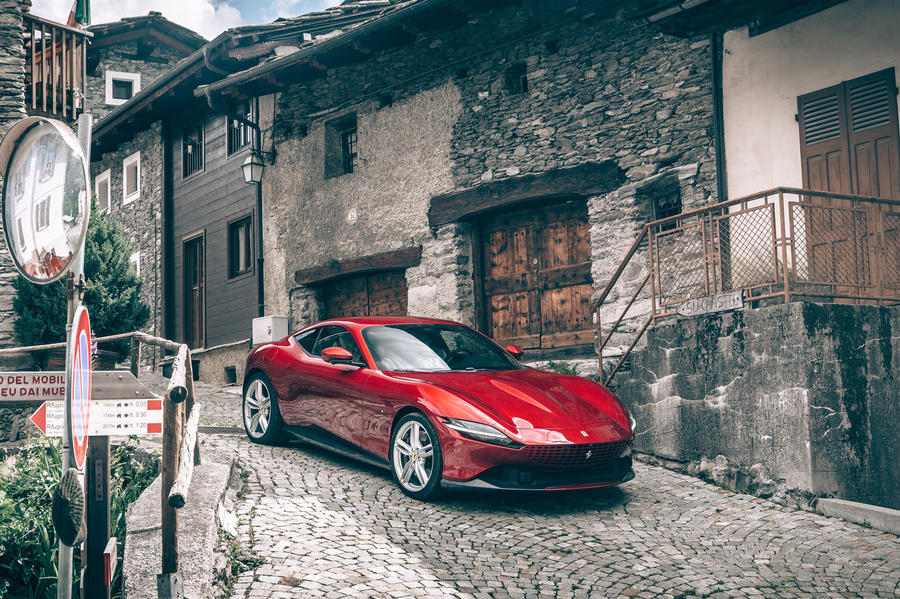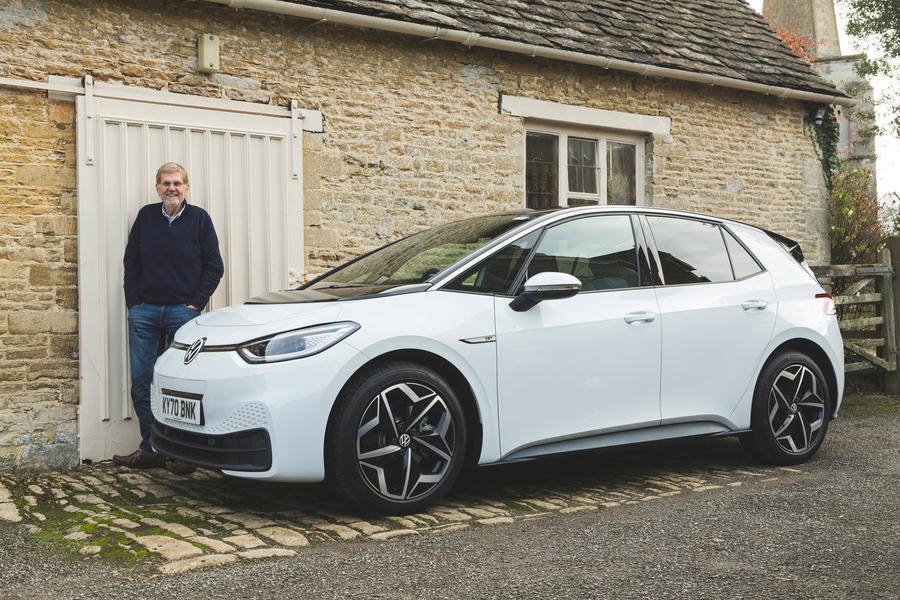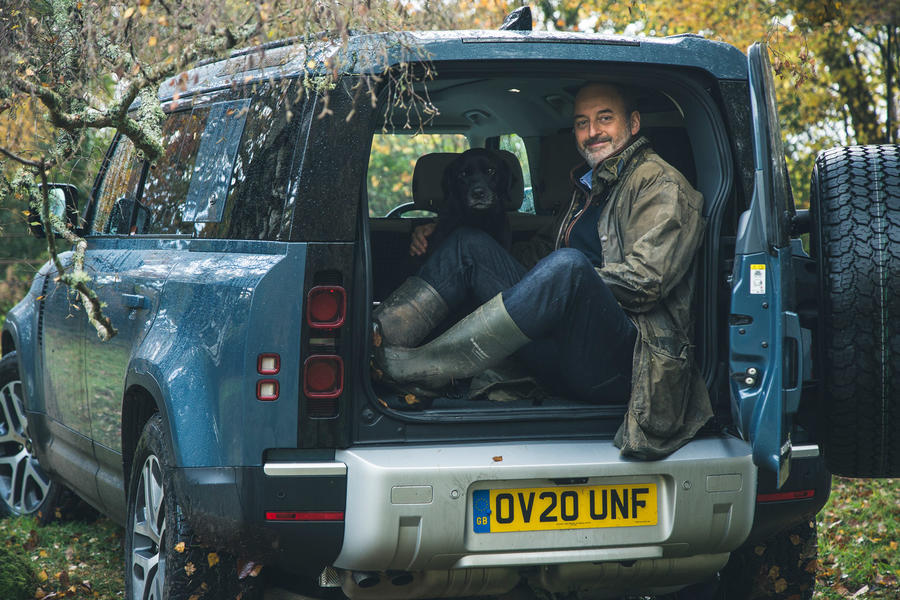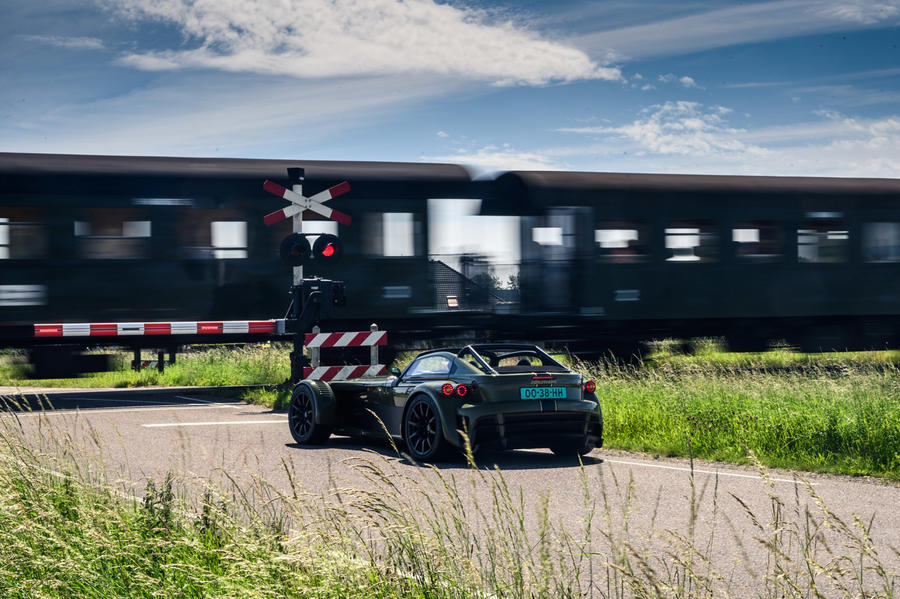Coronavirus made an in-flesh lunch a non-starter
The highlight of our testers’ calendar was at risk of being cancelled due to Covid. But t’internet came to the rescue
For hour after hour we chased across the wilderness. Through engine bark and radio banter, there was excitement and happiness to be heard. We’d stop and swap, before our crazy convoy would careen west once more, a diverse caravan of cracking cars ploughing a furrow across this sceptred isle. In a warm inn, we quenched our thirst and sated our hunger as the passion for our favourite cars of the year was shared and debated around the table. And tomorrow, heads cleared and hearts racing, we would do it all again.
Well, that didn’t happen. Clearly in terms of global Covid-related upheavals, the cancellation of Autocar’s Christmas lunch is not going to place us high on anyone’s pity list. But what actually passed for one of our favourite events of the year truly was indisputably pitiful: a ragtag bunch of hacks squinting into their screens while wearing a contemptible assortment of Christmas jumpers, Santa hats and scraps of redundant tinsel.
We drank not flagons of foaming ale but mugs of tea from chipped cups. For roast goose and sizzling spuds there were sandwiches and packets of crisps. Sartorially we were a disgrace, worthy of no further mention other than Matt Prior, who at least had the dignity and presence of mind to wear antlers.
As ever, we were saved by the cars we brought. Or didn’t bring. Some we had not driven for months, yet despite the passage of time their memories remained as strong as ever, the selection as catholic as we have come to expect. There are, it seems, some things not even Covid can stuff up.
From the stoically traditional (my Land Rover Defender) to the thoroughly modern (Steve Cropley’s Volkswagen ID 3), past the fabulously wacky (Prior’s Donkervoort) and just plain unhinged (Richard Lane’s Ruf CTR), they came from all corners of the automotive spectrum. We had a classic beauty (Matt Saunders’ Ferrari Roma), a rule-bending sensation (James Disdale’s Toyota GR Yaris) and in Simon Davis’s Boxster GTS the almost obligatory Peter Perfect Porsche, the car that can do no wrong.
And so without further ado – or mince pies, brandy butter, crackers or anything else you might associate with the seasonal festivities – let us commence, our contenders appearing in the order in which their keepers appeared on my screen during our two-hour Zoom call. And you don’t get more Christmassy than that.
Matt Saunders, didn’t bring a Ferrari Roma
I drove it back in August, just as we emerged from lockdown #1. It seemed to me like this was Ferrari getting back to something a little bit more sensible and classic, a return to a kind of car it used to do really well but appears to have forgotten about in the past 10 years or so.

The Roma reminded me of the 550 Maranello we drove last year to celebrate the 30th anniversary of our Britain’s Best Driver’s Car contest. The concept is quite different – one a two-seat V12, the other a 2+2 V8 – but a mix of usability and performance is common to both. And I like the way it balances a full measure of Ferrari excitement factor with a positioning that is a little more affordable and sensible. The result is a car you can imagine using for all sorts of reasons.
Ferrari has good reason to make ultra-exciting mid-engined supercars, but the super-GTs have become too tweaky since F12. I’ve never seen a lot of appeal in the FF, and with the other V12s getting more daft, the case for a car in the middle to fill the increasingly conspicuous vacuum is clear. Until they did the Roma I never thought they’d go back there, and to do so with a car that looks so great is wonderful. I didn’t think it would slot in as well as it has.
It is a little more of a natural driver’s car than a Porsche 911 Turbo S, and in character is more akin to lower-order Astons. But it is more exciting, engaging and better-handling than a Bentley Continental GT and a cut above them for usability.

I want a genuinely usable Ferrari, and there hasn’t been a mid-engined one for a while – possibly ever. But not only can I can imagine using a Roma in this way, I would also want to.
It also feels a lot more special than a Portofino, despite sharing its underpinnings. Maybe that’s the point: with so much of the engineering already done, perhaps the budget was there to go to town on its design. And I love that Ferrari has made a really good-looking car again.
Steve Cropley, didn’t bring a Volkswagen ID 3 (58kWh)
I ‘brought’ the ID 3 because of its significance both to Volkswagen and the wider car world. If you look at the history of the company, it has come in three enormous steps: the original pre-war Beetle, the Golf, which was launched in 1974, and now the ID 3. I really do feel it is one of those landmark moments. The opportunity to turn up in VW’s most significant car since 1974 was too good to miss.
I really like the application, too. It looks terrific and thoroughly modern but unmistakably a Volkswagen. It was really interesting to see VW’s interpretation of what the world’s requirements are going to be. It has a maturity about it, because Volkswagen has always been able to do that. And it doesn’t disappoint. The car is good to drive and really roomy yet feels agile despite its long wheelbase. It looks compact but feels spacious, which really is the best of both worlds.

I can remember at the time that some people were a bit scared of the clinical nature of the Golf, but look at it now. The ID 3 has that essence about it. It’s not just a good new take on the Golf, but it’s also a really good EV, and well on the way to doing all I expected and hoped of it. I’d have it over anything else electric that this money can buy. The ID 3 recognises that a step change was needed, and that’s what it is. It’s as big a moment today as was the Golf in 1974.
Richard Lane, didn’t bring a RUF GTR
I came away from the CTR thinking what an amazingly brave car this is in 2020. Ruf provides a true playground for petrolheads, with cars unlike any other you can buy. It is absolutely not just another tuned-up 911, but for £600,000 that’s to be expected.
I loved the cognitive dissonance of how all the technology contained within works in a car that manages to feel and look like a 1990s Porsche. On paper the CTR reads like a modern hypercar, with a carbonfibre tub, mid-mounted twin-turbo engine and double-wishbone pushrod suspension. But climb aboard and you are, in effect, sitting in a 993.
More impressive still is the way they’ve gone about doing it. The engine is the famous 3.6-litre ‘Mezger’ unit, but instead of just winding up the boost, Ruf has gone to work on it, with the result that it develops 700bhp. To drive, though, its power delivery is so linear that it feels fairly normally aspirated. And then there’s the gearbox, a bespoke seven-speed manual built by ZF just for this car. That ZF would even think of doing that shows how respected Ruf is by those who know.

Ruf has stolen a march on the restomod brigade, who don’t tend to fundamentally change the recipe. But then this comes along, with all that technology but for a similar price, so you know you’re really getting something for your money. I like also that it’s a complete outlier in the supercar world, reprising a philosophy that doesn’t really exist any more: a completely modern supercar styled as 964. It’s light, it’s manual, it’s not too wide or too big and its ride quality is amazing. It’s not just a great idea but also one that’s been brilliantly finessed.
Andrew Frankel, didn’t bring a Land Rover Defender 110
I have no objectivity here: I still have the Land Rover in which I passed my driving test 38 years ago, so for me there was no more important launch this year. And having seen how brilliantly Mercedes-Benz and Suzuki had resurrected the G-Wagen and Jimny respectively in their original image, I worried that Land Rover was about to make a terrible mistake with the Defender. And then I drove it.
The first thing I did was take it places you’d normally only consider in specialist military vehicles, or at least in those with a winch. It got to those places without apparent effort. I expect an old Defender would have been able to follow it, but only with an expert at the wheel. I’m a bit of a duffer when it comes to off-roading but was staggered by how easy it made my life. So the car is authentic, the off-roader of off-roaders, which was the most important thing to me.

But there’s far more to it than that. What I really appreciated was the way it combined all that ability with an appropriately utilitarian interior in a car that was still quiet enough, incredibly comfortable to drive and connected to the world in the way that all modern cars must be. I even found myself understanding a JLR infotainment system, and it’s been a while since I’ve been able to say that.
For the first time since the Discovery 4 was discontinued in 2016, there is a car that is once more everything I want a modern Land Rover to be. I hope that all those to come, be they bigger or smaller, use this as their template.
Simon Davis, didn’t bring a Porsche 718 Boxster GTS
The first Boxster I drove came with that flat-four motor and I was underwhelmed by it. I remember as a teenager going in a family friend’s 997 and being amazed by the way it accelerated, the noise, all that theatre… It was all I hoped a Porsche would be. I got into the Boxster full of expectation, but on hearing the awful noise it made, all the sense of occasion went out of the window.
So it’s wonderful to see how good the Boxster can be with a proper engine behind the driver once again. I could have ‘brought’ a Cayman GTS, of course, and all of the above would apply equally to either.
I like all the things you’d expect, from the power and performance to the handling and steering, but it’s interesting to see how close this standard Porsche product now comes to hallowed machines such as the Boxster Spyder and Cayman GT4. There’s much less between them than you’d think, and as an everyday, all-purpose sports car, I’d actually have the GTS every time.

It’s amazing how complete it feels and how hard it is to criticise. It’s only those needlessly long gear ratios, which let you get close to 80mph in second, that need looking at. If you want a mid-engined car with a normally aspirated engine and a manual gearbox, and unless you’re on the list for one of Gordon Murray’s T50s, this is the only act left in town.
Matt Prior, didn’t bring a Donkervoort D8 GTO-JD70
This is one of those nicher-than-niche cars, the automotive equivalent of a four-hour black-and-white German art house movie. Donkervoorts aren’t sold widely in the UK because they don’t do righthand drive, but the business began when Luc Donkervoort started importing Caterham Sevens 42 years ago, then realised they needed some modifications before they could go on sale in the Netherlands. And he just kept on modifying.
Now they are stand-alone products, slightly bigger, more aerodynamic and a touch heavier. Today it uses the 425bhp five-cylinder Audi TT RS engine, but power goes rearward though a five-speed manual gearbox. It has a steel spaceframe chassis with carbonfibre reinforcements, weighs just 700kg and is absurdly fast, and not just in a straight line. They say it’s capable of developing 2g of lateral grip.
This car is polished in almost all respects. The chassis is superb, with just a little understeer on entry followed by as much oversteer as you like. The engine sounds fabulous and the car is beautifully finished. And it’s usable: it has door panels, a roof, heater, luggage space and even air-con.

I don’t like the £170,000 price, but if you find yourself enjoying the drive more than you would in, say, a Ferrari F8, that’s how you justify the cost. And they’re incredibly rare: just 50 are built per year.
Objectively, it doesn’t stack up to a Caterham 620S but it’s more habitable, spacious and usable. They also make most things in-house, including their own carbonfibre. The point is that when I do my money-no-object three-car fantasy garage, there’s sometimes a Donkervoort in it but never a Caterham.
James Disdale, didn’t bring a Toyota Yaris GR
I’m a bit of a rally buff and love all those old homologation specials, but I missed out on them when they were new. When I started in this business, we were down to the Subaru WRX STi and Mitsubishi Evo X, which were good cars but not true greats.
You can understand, then, why I was so excited when Toyota launched this mad Yaris. Yes, we’d had the Volkswagen Golf R and Audi S3, but this is something else entirely: a proper Japanese nutter car.
It didn’t disappoint. It’s the right size and doesn’t have mad amounts of power but feels really quick thanks in part to incredible traction. There was nothing I didn’t like about this bonkers, brilliant car. But what I liked most was that there was no reason to build it. They didn’t need it but decided to do it anyway: ‘Let’s make a bespoke drivetrain and stick it in a Yaris, just because we can.’

The GR Yaris is the perfect size and has the perfect performance for UK roads. It feels like it was designed and built for and by people like us.
And finally…
Our testers voted on their favourite car here not including their own choice. And the winner is…
Toyota GR Yaris 3 votes (Saunders, Cropley, Davis)
Donkervoort D8 GTO-JD70 1 vote (Lane)
Ferrari Roma 1 vote (Frankel)
Land Rover Defender 1 vote (Prior)
Porsche Boxster GTS 1 vote (Disdale)
RUF CTR 0 votes
Volkswagen ID 3 (58KWH) 0 votes
READ MORE
Autocar’s ultimate Christmas quiz
2019’s best cars: the Autocar road testers’ Christmas dinner
90 years special: Magic moments from Autocar road testers past and present
Source: Autocar
